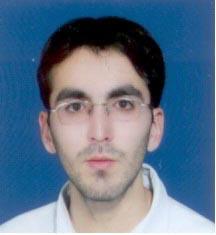

The Lavi (young lion) program began in the late 1970s when IAI agreed to develop a new multi-role fighter to replace Israel's aging A-4 Skyhawk and Kfir combat aircraft. Seeing a need for some 300 planes, including 60 two-seat combat-capable trainers, the Lavi was envisioned primarily as a close air support and tactical attack platform with a secondary air superiority capability. Although Israel was successful in obtaining significant development funds from the United States, nearly all design work was done in Israel. The only major foreign involvement came from Pratt & Whitney, subcontracted to develop the engine, and Grumman, which assisted in the design and manufacture of the composite wing.
The resulting design was largely similar to the American F-16, though slightly smaller and lighter. The Lavi also featured a delta wing and canards with a fly-by-wire control system for superb maneuverability. Furthermore, IAI incorporated an advanced set of avionics systems including glass-cockpit displays, a helmet-mounted targeting system, a heads-up display (HUD), and a multi-mode pulse-Doppler radar. One unique aspect of the design was the decision to develop the two-seater variant first. The space occupied by the backseat was then used for avionics and systems in the single-seat model.
Though the Lavi appeared to be progressing well and two prototypes had completed over 80 flights, political and economic factors began to take their toll on the project. The US had supplied some 40% of the development costs of the new fighter, but refused to allow export licenses for certain pieces of technology. As a result, unit cost began to spiral beyond what the US or Israel had anticipated. In addition, the capabilites of the Lavi were becoming increasingly similar to the F-16, and the US Congress feared the Lavi would interfere with export sales of the American fighter. As a result, Congress withdrew all future funds for Lavi development during the mid-1980s. The Israeli government quickly realized it could not proceed without this support and was forced to cancel the Lavi in August 1987.
Of the five prototypes then completed or under construction, three were sold for scrap and one was given to a museum. However, the third prototype, B-03, was completed using internal IAI funds. This aircraft served as a two-seat technology demonstrator with a complete fit of advanced avionics. The Lavi TD was used for corporate marketing until the mid-1990s when it was converted into a non-flyable ground test vehicle. This marketing effort saw great success in China, and IAI was contracted to provide assistance to Chengdu in developing the very similar J-10 fighter.

No comments:
Post a Comment